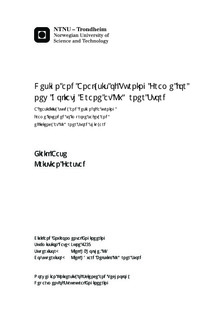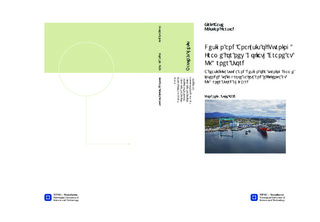| dc.description.abstract | As the industrial company Kværner faces ever tougher competition from foreign companies, increasing productivity and reducing costs is essential in order to win contracts and be successful in the future. With regards to increasing productivity, the Kværner shipyard at Stord wishes to assemble the topside modules manufacture at the yard in an up-side-down position. It is expected by Kværner that this rationalizes the manufacturing process of the topside modules while also increasing personnel safety. Consequently, Kværner wants to assess the possibility of turning topside modules of up to 500 tonnes in mass up,-side-down at the shipyard. This project aims to investigate the feasibility of this idea. Starting with a broad and open perspective, creation and evaluation of ideas, applying strategies from engineering design methods leads to detailed solutions. The result is a planar steel structure, hereby denoted turning frame, onto which the topside module is mounted in the horizontal position. The turning frame acts as an intermediary structure between the crane and the topside module. The frame has lifting points at the edges onto which the ropes of the crane are connected. The lifting process is rather complicated compared with usual lifting operations. The rope forces have to stay within the capacity of the crane, all the while maintaining stability of the turning frame with the topside module. Stability is essential in order to limit unintended motion of the frame, which elicits large dynamic effects due to the mass inertia of the load. A detailed design of the turning frame is obtained and analyzed with respect to capacity toward critical load combinations. The frame is analyzed in the horizontal and vertical positions, which are deemed the critical positions. MS Excel is applied to calculate support and internal forces, as well as check of cross section capacity and capacity toward column and plate buckling. Welds are also designed and documented. The calculations are used to verify finite element models. Peak stresses in the frame are investigated using 2D and 3D elements. Overall, the design of the frame is deemed acceptable, given that some stress concentrations are mitigated by rounding off sharp corners. The shortcomings of the analysis of the frame are explained, and suggestions to further work are presented. With respect to the overall feasibility of the concept, there are major obstacles which must be overcome in order for the concept to be feasible. A major problem is overcoming instability of the system as the frame approaches the vertical position. As the topside module is mounted on top of the frame, the center of gravity of the module is eccentric from the plane of the frame. This eccentricity results in a moment which at the point the frame is at 90°, must be carried by horizontal components of the rope forces alone. An optimal scheme of rope forces is presented, which can be a guideline for the crane operator. The optimal scheme ensures that the stability of the frame is maintained, as well as ?acceptable? rope forces. ?Acceptable? means that the total rope force is within the capacity of the crane, but the direction of the rope force is however not acceptable. As the moment due to the eccentricity of the topside module is carried by horizontal forces alone in the vertical position, horizontal components of the rope forces must be the equivalent of up to 111 tonnes of mass to maintain stability of the frame in the vertical position. If stability is not maintained, the frame will tip over due to the moment caused by the eccentricity of the module. Given the assumptions about the module applied in this project, the frame reaches the tipping point at roughly 70° rotation. The horizontal forces are led to the trolleys of the crane, which are absolutely not able to carry this load. This problem must be solved in order for the concept to be feasible. Also, the topside modules must be examined thoroughly to determine whether they can withstand being lifted as proposed in this project, as there will also be internal moments in the vertical position which the modules are not designed for originally. Overall, the feasibility of the concept is considered to most likely be unacceptable, as long as the obstacles are not overcome.The students have had a challenging task in this thesis. Creative thinking as well as ability to apply understanding of mechanics of moving objects and advanced load scenarios has been crucial to the progress of the work. The students are of the opinion that the work has been interesting and a valuable experience, highly relevant for future careers. | nb_NO |

